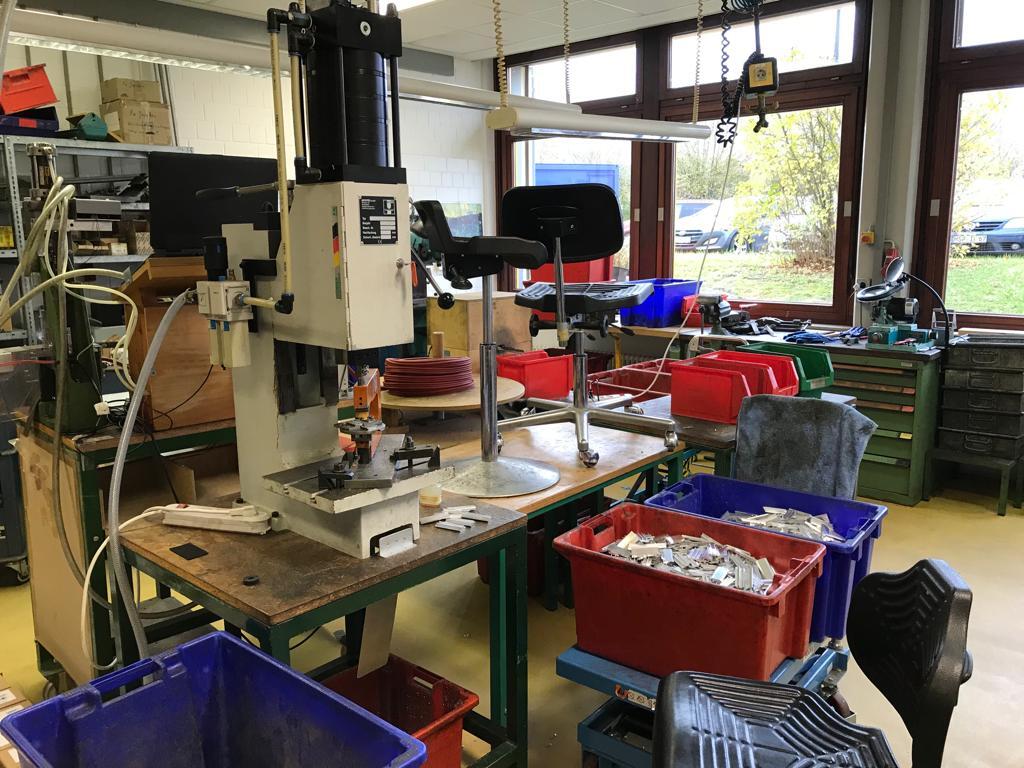Behavioral Safety in Unusual Working Environments
Prof. Dr. Christoph Bördlein
Behavior-Based Safety (BBS) – the application of behavior analysis to the area of workplace safety – is successful in reducing workplace accidents. A large number of studies have emphatically confirmed this. No other measure for changing behavior in the area of occupational safety has been so well researched and has been able to demonstrate so impressively in these studies and numerous companies worldwide that it actually achieves what it promises – fewer accidents at work. This has led Philip Zimbardo (2004) to include BBS among the most important contributions of psychology to the improvement of our society (interestingly, psychologists like to claim applied behavior analysis when it comes to proving that “psychology” is successful).
Typical environments for BBS are factories, although there are BBS applications in different industries such as the construction industry, health sector, logistics companies, petroleum operations, etc. Typically, companies that use BBS are larger. This is because typical BBS systems often involve a certain amount of effort – the deployment of personnel, money, and other resources. However, most companies are small or very small in terms of the number of employees. In Germany, 55% of all employees work in small (with fewer than 50 employees) and medium-sized companies (50-250 employees) (Destatis, 2022).
BBS is an application of behavior analysis. It is not a ready-made concept from a consultancy firm but a collection of universal principles applicable to—in principle—all circumstances. Wherever people work and behave, there is room for BBS to help them work safer. It’s just a question of adapting the universal principles to the environment and the way that people work there.
I did some research on how we can adapt BBS to unusual working conditions (Bördlein, 2022a, 2022b), especially in small to medium-sized companies. I have limited resources for research, but so do the companies and organizations involved in the research. They cannot afford a consulting firm taking several $ 1000 a day, not prolonged training with their employees, and not the other typical processes and institutions necessary in BBS, like a steering committee, safety experts, etc. I rely primarily on students doing their bachelor’s or master’s thesis projects. Some examples are:
BBS in a dental surgery (Kade & Bördlein, 2024). My student, Lisa Kade, is a former dental assistant. Dental assistants and dentists are – astonishingly – among the most endangered employees. The frequency of work-related accidents and health complaints among dental assistants is high due in part to working with chemicals and infectious material, frequent “wet work” (work in which the hands are constantly wet), and the physical stress caused by X-rays and the noise of dental instruments. Lisa developed a checklist of 20 safety-related behaviors and outcomes of behavior that she used to help the employees of a dental practice work more safely with the help of BBS (task clarification, feedback, goal setting, positive reinforcement). This checklist can also be easily used by the practice staff themselves, e.g., by the quality manager, who has to ensure compliance with rules in the practice anyway. With relatively little effort, Lisa was able to significantly increase safe behavior in the practice within a few weeks.
BBS with rescue assistants. This was a project with the German Red Cross (DRK) and the responsible accident insurance, German Federal and Railroad Accident Insurance (UVB). The DRK is not a small organization; it does not work for profit. They usually have tight budgets. Their revenue depends on the money the health insurance companies pay them, and they don’t pay for such extra activities as BBS training. By observing during missions and giving feedback, we managed to improve the safe behaviors of the paramedics. We developed a BBS system for rescue wards of the DRK that the rescue workers can easily integrate into their usual work processes. For example, debriefings can be used for peer feedback; observations can be included in the normal documentation of missions, etc.


BBS in a workshop for the handicapped. The situation here is similar to at the DRK insofar as the organization works not for profit and has limited resources for anything that goes beyond what is legally required. Workshops are at high risk because the employees are usually not highly trained. The working environment is not as professionalized as in a “real” industrial company. However, similar activities are carried out there (e.g., assembly), and the proportion of particularly accident-prone manual work is particularly high. My student Sophia Memmel worked as a social worker in a workshop for the handicapped that carried out electrical and metal work and employed over 100 people with various mental and physical disabilities.
In her bachelor’s thesis, she found that the key to occupational safety in the workshop for the handicapped is the role of the workshop instructor. Workshop instructors are employees with technical training (e.g., as electricians or mechanics) and an additional pedagogical qualification. They are a mixture between a foreman and a teacher. If the instructors use a checklist to monitor the behavior of the employees, give feedback, and set goals, occupational safety in the workshop improves significantly. Material reinforcers, especially those that combine edible and social reinforcers (e.g., a hot dog party), delivered contingent on behavior change, also increase employee motivation to work safely.
BBS with hairdressers (Schönleber & Bördlein, 2018). Hairdressers are often forced into early retirement. The most common reasons for this, in addition to allergies, are musculoskeletal disorders due to the often unergonomic working posture. Alexandra Schönleber was a hairdresser before she went to university. In her thesis project, she observed two hairdressers working in a small hairdressing salon. She specifically recorded three types of behavior: Whether the hairdresser stood with both feet flat on the floor when styling the customer, whether her spine and head were in a straight line, and how often she switched the hairdryer from one hand to the other (or whether she always held the hairdryer with the same hand, which leads to one-sided strain). Through task clarification, feedback, and positive reinforcement, she achieved significant increases in the observed safe behavior of the hairdressers. The measure also had the effect that the employees now reminded each other more often to adhere to the above rules. Suppose such rules are institutionalized and integrated into the work routine. In that case, it is possible to achieve that the hairdressers will pay more attention to each other and encourage each other to work safely in the future, even without an external observer like Alexandra.
Most of these projects were relatively inexpensive to carry out, as they were bachelor theses. Their scientific significance is, of course, limited. However, some insights can be gained from the studies on the implementation of BBS in unusual work environments. What are the peculiarities of BBS in unusual settings?
The intervention strategy has to be easy to use and foolproof, as extensive training in the peculiarities of BBS is not a realistic option for organizations. Templates are helpful – but organizations should have access to a person trained in the fundamentals of BBS. The UVB, for example, which financed and supported the project with the German Red Cross, trains its on-site-supervisors (i.e., accident insurance employees who monitor compliance with safety regulations in companies) in the basics of BBS so that they can better advise their companies on the implementation of BBS measures. In view of the sheer number of companies, this advice can only be given to a limited extent and requires a certain amount of initiative on the part of the companies.
It is essential to make it clear to companies that BBS is not rocket science but that there are many things to consider. The basic idea of BBS is that you should support employees in working safely by making it as easy as possible for them to work safely, reminding them to work safely, and encouraging them to work safely through observation and feedback. Everything else is a matter of creativity in adapting the principles of BBS to unusual working conditions.
Guest Author: Christoph Bördlein

Christoph Bördlein is a professor of psychology and behavior analysis at the Technical University of Applied Sciences Würzburg-Schweinfurt (THWS). His main area of interest is applied behavior analysis, in particular behavior-based safety (BBS). He is the author of the German standard textbook on BBS, an introduction to behavior analysis, a textbook on research methods in applied behavior analysis and the popular introduction to skeptical-scientific thinking “The sock-eating monster in the washing machine”, in which the author explains how to test the truth of extraordinary claims without bias.
References
Bördlein, C. (2022a, June 16). Behavioral Safety in Unusual Settings. Invited Keynote Address at the 10th Conference of the European Association for Behaviour Analysis, Tampere/Finland.
Bördlein, C. (2022b). Verhaltensorientierte Arbeitssicherheit – Behavior Based Safety (BBS) (3. ed.). Erich Schmidt Verlag.
Destatis (2022). Small and medium-sized enterprises. https://www.destatis.de/EN/Themes/Economic-Sectors-Enterprises/Enterprises/Small-Sized-Enterprises-Medium-Sized-Enterprises/_node.html
Kade, L., & Bördlein, C. (2024). Behavioral safety in a dental surgery facility. Journal of Organizational Behavior Management. https://doi.org/10.1080/01608061.2024.2382980
Schönleber, A., & Bördlein, C. (2018, 20/09/2018). Behavioral safety in the hairdressers’ shop. Paper presented at the 9th Conference of the European Association for Behaviour Analysis. Würzburg, Germany.
Zimbardo, P. G. (2004). Does psychology make a significant difference in our lives? American Psychologist, 59(5), 339-351. https://doi.org/10.1037/0003-066x.59.5.339
